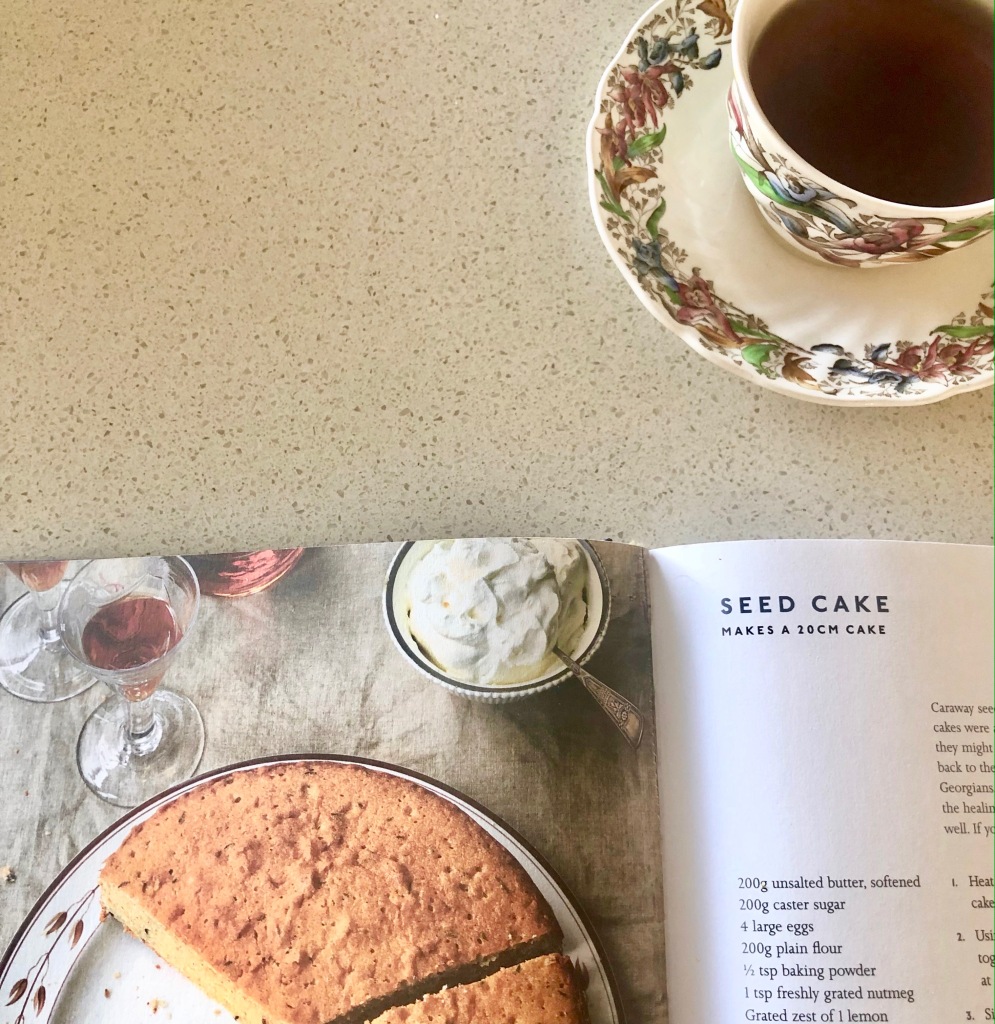
I’ve told you before about my book club and how we’re reading the classics, right? Well, we might as well be called the Bronte Sisters Book Club because after reading Wuthering Heights and Agnes Grey we’re now working our way through Jane Eyre.
If you’d ever asked me if I’d read Jane Eyre, I would have replied in the affirmative. I had, after all, skipped my way through Jane Austen, laboured over Thomas Hardy, read and re-read Edith Wharton, a smattering of Henry James, Elizabeth Gaskell, George Eliot and Henry James; and, from the Brontes, Wuthering Heights and The Tenant of Wildfell Hall.
I thought I’d read Jane Eyre, I was positive I had; but now that I’m in it, I don’t recognise the words – they’re new to me even though the story isn’t. I think, perhaps, rather than reading it, I’d watched it.
And what a treat this book is. To say it’s filling my senses would be to undersell the impact it’s having on me.
But what to bake from it? My first recipe has to be for seed cake – the treat that was offered to Jane and Helen Burns by their teacher Miss Temple. A treat that was probably the first piece of kindness in Jane’s otherwise grey existence.
Having invited Helen and me to approach the table, and placed before each of us a cup of tea with one delicious but thin morsel of toast, she got up, unlocked a drawer, and taking from it a parcel wrapped in paper, disclosed presently to our eyes a good-sized seed-cake.
“I meant to give each of you some of this to take with you,” said she, “but as there is so little toast, you must have it now,” and she proceeded to cut slices with a generous hand.
We feasted that evening as on nectar and ambrosia; and not the least delight of the entertainment was the smile of gratification with which our hostess regarded us, as we satisfied our famished appetites on the delicate fare she liberally supplied.
Jane Eyre, Charlotte Bronte
Seed cakes were a staple on the Victorian tea table, with the seeds in question being caraway. While it’s a taste we associate more with Scandinavian cooking these days, caraway was very popular back in Jane’s time. It’s also associated with spring as seed cake was given to farm workers to reward them for the labour of seed-sowing.
To find a recipe I consulted Regula Ysewijn’s Oats In The North, Wheat From The South. She uses a classic pound cake recipe (200g butter, 200g sugar, 200g plain flour, 4 eggs) with a massive 1 tablespoon of baking powder and a mix of caraway seeds and Indian mukhwas (fennel seeds with a coloured sugar coating).
Nigella also makes a caraway seed cake, but hers is an addition to her mother-in-law’s madeira cake (from How To Be A Domestic Goddess) – a gorgeously buttery cake that, in Nigella’s words, “you think you can’t see the point of, until you start slicing and eating it.”
I, however, ended up using Paul Hollywood’s British Baking. As an aside, I don’t (yet) own a copy of this cookbook but have now borrowed it from the library on at least three occasions – each time renewing it as many times as I’m allowed. I suspect it will, in the near future, find its way onto my bookshelf.

Hollywood’s recipe is almost identical to Ysewijn’s, but uses a lot less baking powder and adds the zest of a lemon, grated nutmeg and a dash of brandy. And, I have to say, it makes for a flavoursome cake indeed – and one I think Jane would have been very pleased to have partaken of.
Before we get started on the recipe, a hint: make sure all your ingredients are at room temperature – and that includes the eggs. It’s the best way to make sure that they don’t cause your creamed butter and sugar to curdle. Having said that, if it does (curdle, that is), beat in a little of your flour mix (a teaspoonful should be enough) before you fold the rest through. And if you can’t find caraway seeds, poppy seeds will also work nicely.

What you need…
- 200g plain flour
- 200g caster (superfine sugar)
- 200g butter at room temperature.
- 4 large eggs
- 1 tsp baking powder (Hollywood only uses ½ tsp, but I got a better result with 1. Sorry Paul…I can call you Paul, can’t I?)
- 1 tsp grated nutmeg
- Grated zest of 1 lemon
- 1 tbsp caraway seeds
- 2 tbsp brandy
- A splash of milk if you need it
What you do with it…
- Heat the oven to 180C and grease and line a 20cm springform cake tin or a loaf tin.
- Beat the butter and sugar together until pale and fluffy – a handheld electric whisk is fine for this. Add the eggs one at a time, beating well between additions.
- Sift the flour and baking powder into a bowl and stir through the seeds, lemon zest and nutmeg. Fold this floury mix into your eggy buttery mix until evenly combined.
- Fold in the brandy. Your mix should now be soft enough to drop off a spoon – if not, add a dash of milk.
- Spoon into your cake tin and bake for 45-50 minutes – a skewer inserted into the centre should come away clean. Leave to cool in the tin for 15 minutes before transferring to a wire rack to cool completely.


Remind me again why we don’t live next door to each other? You also left out the part about Nigella’s IM comment which was very, very cool!
LikeLiked by 1 person
Aaaah I wrote and scheduled this before I had that little claim to fame…one of Nigella’s favourite (albeit underrated) cakes.
LikeLiked by 1 person
Hi Jo, what time is afternoon tea? I’m lucky I live a little closer to you than Donna! I’m enjoying our baking sessions with you and can’t wait to see what you have lined up for us this month. Well done having Nigella as one of your IG followers. Perhaps she might pick up a few tips from you 🙂
LikeLiked by 1 person